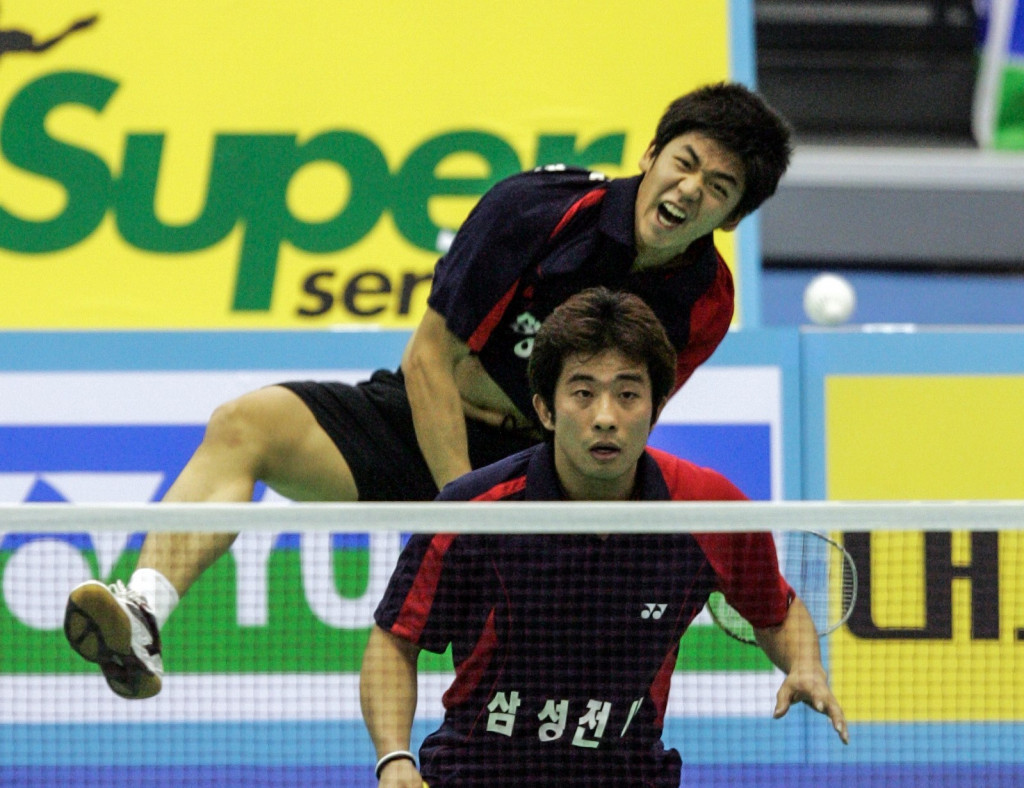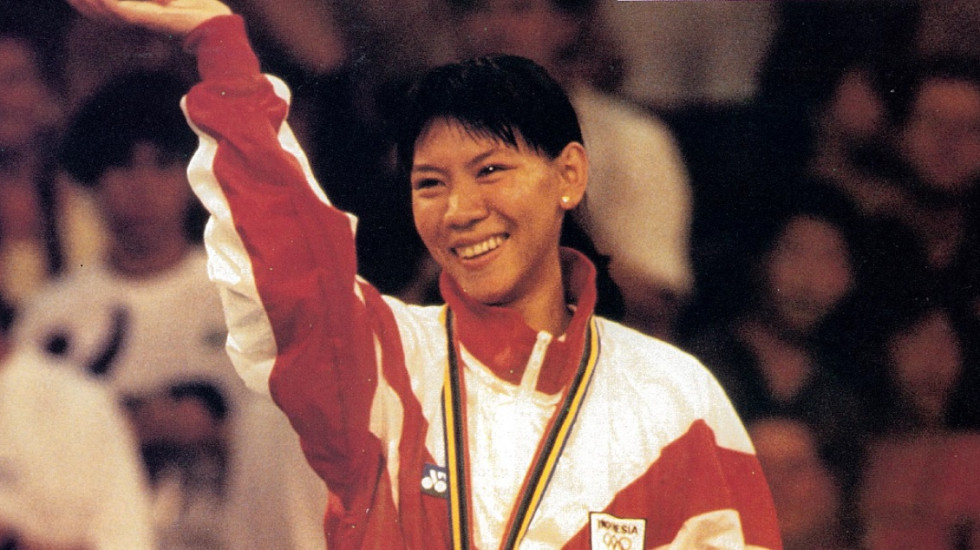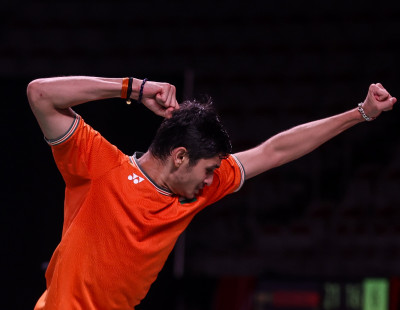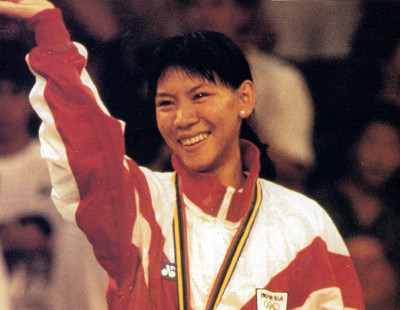Ninety years old, much travelled and evolved, but still reinventing itself all the time.
The Badminton World Federation has charted a unique course during its journey – from its early years in England as the International Badminton Federation, surviving World War II not long after its birth; its youth, during which time it overcame a family feud; and on to thriving middle age, shepherding badminton into one of the world’s most followed sports.

Sir George Thomas with the Thomas Cup
The International Badminton Federation was born on 5 July 1934. Its parent was the Badminton Association, which was formed in September 1893 to bring about uniformity in the rules of the game. While the Badminton Association primarily administered the game in England, a number of overseas clubs had affiliated to it and as the sport grew, the need for a worldwide association was felt.
On 5 July 1934 at Bush House, Aldwych, London, the International Badminton Federation came into being with nine founding members — Canada, Denmark, England, France, Ireland, Netherlands, New Zealand, Scotland and Wales. The Badminton Association, which now became the Badminton Association of England, offered a generous present of GBP200 to the IBF.
Among the early initiatives of the IBF was to have a men’s world team championships, with the President and 21-time All England winner, Sir George Thomas, offering the trophy. The War temporarily halted those ambitions, but by the end of the 1940s the first Thomas Cup had been held, spurring enormous interest particularly in Asia, which turned into the dominant force in time to come.
The Uber Cup for women followed from 1956-57, with Betty Uber – legendary winner of 13 All England titles – donating the trophy.

The USA team, winners of the first Uber Cup in 1957
The All England was for long considered the unofficial World Championships; by the 1970s the IBF had decided to conduct the official World Championships, which was held for the first time in Malmo in 1977.
Perhaps the biggest crisis for the IBF happened not long after this, with the breakaway World Badminton Federation forming in 1978 and organising its own events, but wise counsel prevailed, and the family reconciled in May 1981.
The unification of the badminton family was to revolutionise the sport as China entered the circuit. Korea was also to make waves at the same time, and the intensity of competition would attract legions of fans. This also augured well for badminton’s inclusion in the Olympic programme, and in Barcelona 1992 came the big moment of badminton’s debut as an Olympic sport.

IOC President Samaranch congratulates Craig Reedie, former IBF President, in 1985 on badminton’s inclusion in the Olympics.
Into the new millennium, IBF was to reinvent itself as the Badminton World Federation while shifting its headquarters from the UK to Malaysia, with the sport also changing for a new generation of fans through a different scoring system and the Superseries (later the World Tour) circuit. Other major initiatives, such as the developmental programme Shuttle Time to popularise the sport at the grassroots level, and AirBadminton – catering to those who prefer the outdoors – have taken off over the last decade, ushering badminton to unprecedented heights.
The sport, once confined to pockets in Asia, Europe and North America, has grown into a worldwide phenomenon, and regularly features among the most watched sports at the Olympic Games. Having begun with a family of nine, the BWF today can boast of 201 members, signifying its growth and robust health.
MILESTONES OF BWF’s 90-YEAR JOURNEY
5 July 1934: Formation of the International Badminton Federation (IBF) with nine founding members.
1948-49: The Thomas Cup (World Men’s Team Championships) takes place; the trophy, commissioned by IBF President Sir George Thomas in 1939, starts with 10 teams. Malaya emerge champions beating Denmark 8-1.
1956-57: The Uber Cup (World Women’s Team Championships) held, with 11 teams competing. USA beat Denmark 6-1 in the final.
1972: Badminton is played as a demonstration sport at the Munich Olympic Games.
1977: The first official World Championships is held in Malmo, Sweden.
1979: First international Open tournament offering prize money held at the Royal Albert Hall in London, signalling the arrival of the professional era.
1985: On 5 June 1985 in East Berlin, the IOC confirms badminton as an Olympic sport.
1988: Badminton is played as an exhibition sport at the 1988 Olympic Games in Seoul.

Badminton was an exhibition sport at Seoul 1988.
1992: Badminton makes its much-anticipated debut at the Olympics in Barcelona, with 178 athletes from 37 NOCs taking part in four events. Later that year, the first BWF World Junior Championships is held.
1996: At the Olympic Games in Atlanta, mixed doubles is added to the programme.
2005: In June, the IBF moves its headquarters from Cheltenham in England to Kuala Lumpur.
2006: The International Badminton Federation is re-christened Badminton World Federation (BWF). This year also saw the introduction of the 21×3 rally-point scoring system, replacing the 15×3.
2007: Launch of the BWF World Superseries circuit.

The Super Series circuit was launched in 2007
2011: Shuttle Time, BWF schools’ badminton programme, starts in Tonga.
2012: Badminton remains one of the highest-viewed sports, with record figures at the London 2012 Olympics. The same year, a new BWF logo is launched to reflect the organisation’s contemporary identity.
2013: The Instant Review System is launched at the BWF World Superseries Finals in Kuala Lumpur.
2014: Badminton becomes a Paralympic sport with the International Paralympic Committee announcing on 7 October 2014 its inclusion for the Tokyo 2020 Paralympic Games.
2015: The global integrity campaign ‘i am badminton’ is launched at the BWF World Junior Championships. The same year, BWF and Special Olympics International sign an MoU to support the participation of people with intellectual disabilities.
2016: Badminton is a hit at the first Olympic Games in South America, spurring the growth of the sport in the region.
2018: The HSBC BWF World Tour replaces the Superseries, with a higher number of tournaments across five levels.
2019: In May, AirBadminton project launched in Guangzhou. Later that year, the BWF World Championships is held alongside the BWF Para Badminton World Championships for the first time.
2020: Covid-19 causes a setback, with the cancellation of 147 tournaments. A “safety bubble” system is implemented in Denmark and France, and its success inspires a gradual – albeit patchy — return of the circuit.
2021: Three back-to-back tournaments are held in Bangkok in January in a safety bubble, keeping the sport going during a time of crisis, with tournaments conducted in clusters. A further 91 tournaments are cancelled in 2021.
The Tokyo 2020 Olympics and Paralympic Games are held despite great challenges; history is made with the debut of badminton at the Paralympics. Following its success, more tournaments are held including five Major Championships from September; the calendar concludes with the BWF World Championships. Badminton is back!
2022: Nielsen research puts the size of the global badminton fanbase at 709 million, with 392 million playing the sport at least once a week.
2023: More than 16 million followers globally on BWF media channels.






























